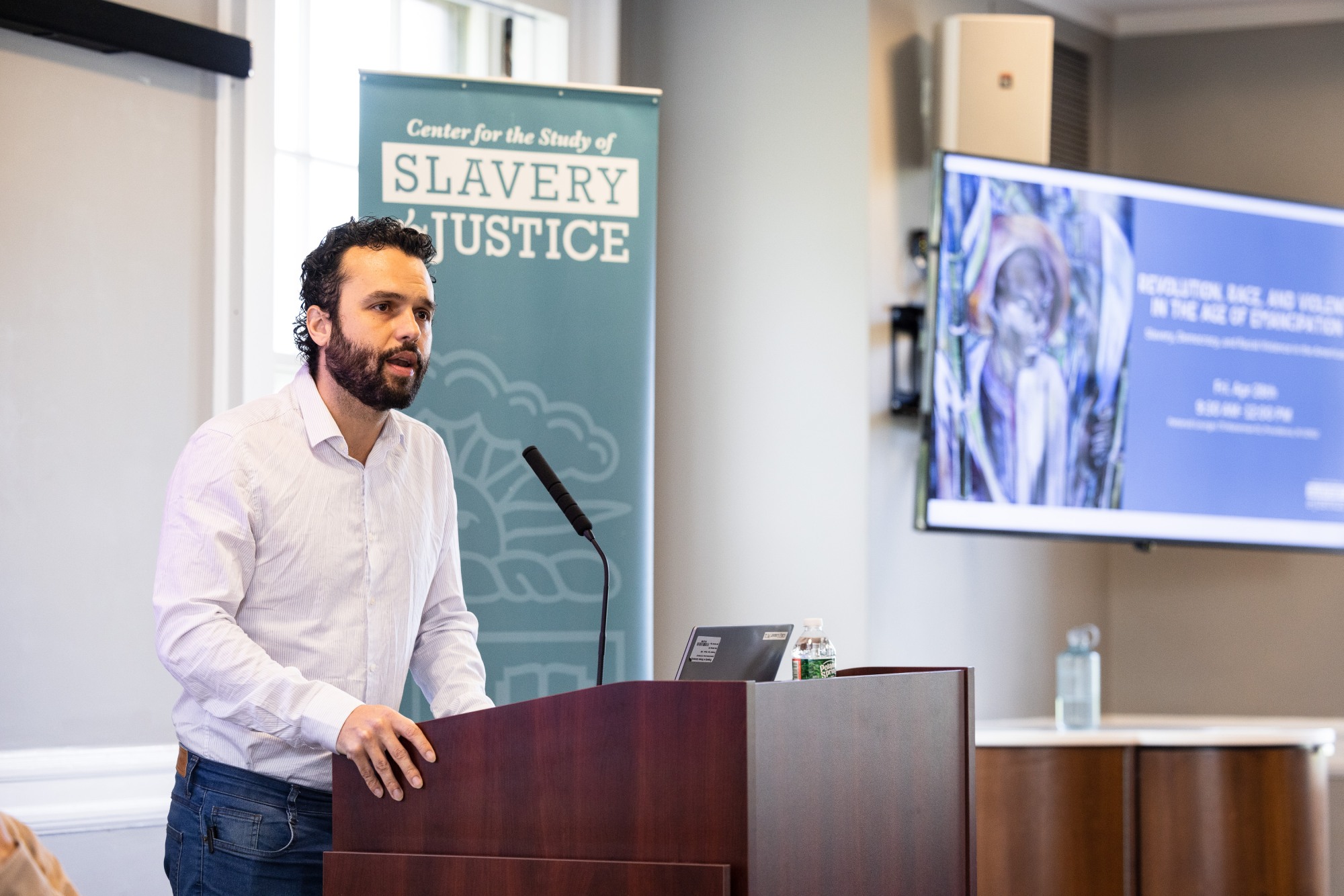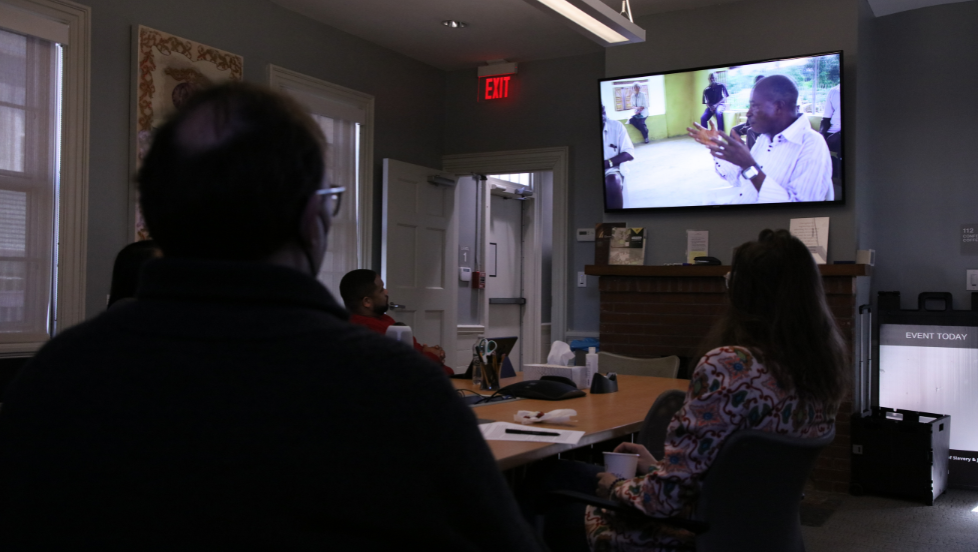2023 Annual Report Update: Postdoctoral Fellows
Simmons Center/Watson Postdoctoral Research Associate Reflection

Credit: Rythum Vinoben
My fellow presentation “Slave Resistance, Criminal Law, and Regimes of Racial Violence in the Americas: Brazil, Cuba, and the United States (1820–1850)” was inspired by the first two chapters of my book project, provisionally titled “The Politics of Racial Violence in the Americas: Slavery, Citizenship, and Criminal Law in Brazil, Cuba, and the United States, 1776-1912,” The preservation of public order in these countries demanded special laws and legal procedures that compromised the rule of law principle and transformed their justice systems into instruments of racial order. Yet there were important differences between these regimes of racial violence. Each country had their own justice system and technologies of punishment. Furthermore, violence was more explicitly racialized in the United States and Cuba than in Brazil. At the same time, mob violence was more common in North America than in Latin America. And the state was more violent against Blacks in Cuba than anywhere else.
These differences were the consequence of distinct political systems and regimes of law, citizenship and race. Democracy and white supremacy in the United States encouraged the common white man not only to tote, but also to conduct parallel forms of justice like lynching. In contrast, the Brazilian monarchy reinforced oligarchical powers and extralegal violence was rarely a mob action. The prerogative of violence and justice was essentially a privilege of the planter class that was predominately white and subordinated free and enslaved people of color. Finally, the presence of a colonial military government reinforced the state prerogative of violence in Cuba. Slaveholders were the main authorities on the plantations, but the preservation of the racial order depended on the Spanish imperial state. The politics of racial violence were distinct but equally effective in subjugating people of African descent in Brazil, Cuba, and the United States.
Marcelo Rosanova Ferraro
Historical Injustice and Democracy Research Cluster Fellow
Simmons Center/Watson Historical Injustice and Democracy Postdoctoral Research Associate
Simmons Center/JCB Joint Postdoctoral Research Associate Reflection
I am deeply grateful to the Simmons Center and the John Carter Brown Library for a rich, productive, and inspiring year. The faculty, staff, and fellows at both institutions bring a uniquely interdisciplinary and international perspective to the study of racial slavery and its legacies in the Americas. It has been extremely generative and thought provoking to be in conversation with this remarkable group of scholars, and I already see the seeds for numerous future collaborations. It has surely enriched my research and writing, and will continue to do so into the future.
My dissertation took a structural approach to the changing legal landscape of Jamaican racial slavery and the implications of those changes for enslaved people’s strategies of survival and resistance. During my time at the Center, I have been restructuring and rewriting my manuscript to instead take a microhistorical approach to enslaved people’s quotidian practices of resistance and survival. This work shares an archival foundation and some lines of argument with the dissertation, but also adds new texture, detail, and insights more accessible at this granular scale. I anticipate the final book will consist of an introduction, six body chapters, and a conclusion, and I have been able to draft four body chapters to date. I hope to complete the introduction, an additional chapter, and a prospectus over the summer, with plans to pitch the book to university presses beginning in the fall.
I have additionally been making progress on several related but distinct articles. I have finally submitted for review a journal article articulating a more critical reading practice for engaging slave inventories, using the records of a specific Jamaican sugar plantation as a case study. I will be submitting a second piece which examines how intimacy and proximity within a single household shapes the resistance strategies of enslaved women working as domestic servants. This postdoctoral fellowship has also provided the opportunity for me to begin a new article project with an Africanist historian colleague examining ethnographic knowledge production about Igboland in the immediate wake of the publication of Olaudah Equaino’s famous autobiography.
Michael Becker
Simmons Center/JCB Joint Postdoctoral Research Associate in Slavery and Justice
Simmons Center Postdoctoral Research Associate Reflection

Credit: Kiku Langford McDonald
As the Simmons Center Postdoctoral Research Associate in Slavery and the Public Humanities, I have had the opportunity to collaborate with colleagues from the Center and Firelight Media on the Transatlantic Slave Trade Film Curriculum Project.
I have been able to bring my experience as a digital editor and research interests in constructions of race in documentary films to my work at the Simmons Center. I am managing the Film Curriculum Project using the four-documentary film series by Stanley Nelson, “Creating the New World: The Transatlantic Slave Trade.” Alongside project management, I have designed the first draft of a digital learning platform accompanying the film series. The platform hosts original didactic materials aimed at using the films in the K–12 classroom to teach the history of the Transatlantic Slave Trade from a non-Eurocentric perspective. During the spring semester, I organized a two-screening film event, “How We Remember: Colonialism and Slavery in Contemporary Nonfiction Films.”
This work complements my book-project, “To Educate is to Civilize: Educational Campaigns through Cinema in British and Italian Colonial Rules (1910–1945),” which examines and compares a selection of educational nonfiction films constructing racialized colonial subjects from British and Italian African territories. Educational films from the colonial period were pro-imperial propaganda tools released and distributed by the colonial governments promoting the “civilizing mission” accomplished in the occupied territories. My study’s comparative approach allows an understanding of the similarities and differences in the colonial imaginaries that the British and Italians constructed over 45 years of colonial rule as they depicted the oppression of different African communities as humanitarian intervention.
Leonora Masini ’22 Ph.D.
Postdoctoral Research Associate in Slavery and the Public Humanities